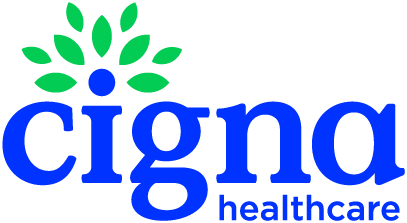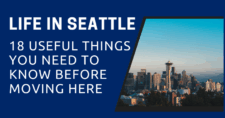
Planning to study at the University of Washington or other educational institutions in the Seattle area as a student? This practical guide will help you understand what you need to know about student health insurance.
As a former student at UW, healthcare and health insurance were things that I didn’t think much about. But they matter when you need them.
So, in this article, I’ll share some insights and personal experiences on healthcare and health insurance. The focus will mainly be on UW ISHIP because that’s the insurance I’m most familiar with, but I’ll also cover other health insurance options and insurance for OPT holders. I’ll also talk a bit about domestic students at the end.
By the end of this guide, you’ll have an idea of how the student insurance system works in Seattle and perhaps even in large US cities in general.
This article will take approximately 28 minutes to read. Don't have the time right now? No worries. Email the ad-free version of the article to yourself and read it later!
Disclaimer: This article may include links to products or services offered by ExpatDen's partners, which give us commissions when you click on them. Although this may influence how they appear in the text, we only recommend solutions that we would use in your situation. Read more in our Advertising Disclosure.
Contents
- Key Takeaways
- The Insurance System
- Healthcare System in Seattle
- Health Insurance Requirements for International Students
- Emergency Treatment
- Other Insurance Options
- Plans comparison
- Can You Opt Out of ISHIP?
- Health Insurance for Students in Other Institutions in Seattle
- Types of Healthcare Facilities in Seattle
- What to Do When You Get Sick or Injured?
- Outpatient Care
- Inpatient Care
- My Experience with Medical Care Providers in Seattle
- How About Domestic Students?
- Medical Costs Without Insurance?
- Insurance Terms Explained
- Disclaimer
Key Takeaways
- International students in Seattle, especially at UW, are automatically enrolled in ISHIP, a comprehensive health insurance plan included in tuition.
- ISHIP covers doctor visits, emergency care, prescriptions, limited dental and vision, and has a deductible plus coinsurance for most services.
- ISHIP cannot be kept after graduation, so OPT holders must buy private insurance.
- ISO, Compass, and Cigna Healthcare are the main alternatives.
- Domestic students usually use private or state insurance and cannot enroll in ISHIP.
- Seattle has many healthcare providers, including hospitals, clinics, and doctors’ offices, with appointments often booked weeks in advance.
- Without insurance, medical bills can be extremely high, even for simple checkups.
The Insurance System
I wrote this section for those who are not familiar with the US insurance system. It gives you an overview of how it works and how it affects you.
The US insurance system is largely market-driven and based on cost-sharing. So don’t expect anything to be completely free. The same is true in Seattle.
Naturally, the majority of Americans rely on insurance through employment-based or private plans. Also, only US citizens and permanent residents have access to ACA-compliant insurance and the federal programs Medicare and Medicaid.
I personally think that’s why most, if not all, universities require international students to have health insurance. As long as you have insurance or can pay out of pocket, you’ll be fine.
Since international students are automatically enrolled in insurance programs depending on their institution, they are largely shielded from the realities of the healthcare system. Some programs will also take care of the paperwork as well.
Healthcare System in Seattle
The US healthcare system is overly complex and expensive. It doesn’t have universal coverage or a comprehensive welfare system like in other countries.
In Seattle, most hospitals are private, and there are many small independent clinics and doctors’ offices. Several large hospitals, like the University of Washington Medical Center (UWMC) and Harborview Medical Center, are operated by UW.
Healthcare in Seattle is advanced and of high quality. The overall service is great, but don’t expect anything fancy compared to medical tourism countries like Thailand or Malaysia.
For most hospitals, you need to make an appointment at least two weeks in advance to see a doctor. Some clinics or doctors’ offices can do next-day appointments, but this isn’t always guaranteed.
Health Insurance Requirements for International Students
In the US, many universities require all international students to have health insurance. Domestic students, on the other hand, aren’t required to do so.
This means if you are an international student in Seattle, for example at the University of Washington in my case, UW will automatically enroll you in its health insurance plan, the International Student Health Insurance Program, or ISHIP for short.
The ISHIP is provided by LifeWise and it’s included in tuition, so you don’t need to worry about buying a plan beforehand.
UW ISHIP Coverage
UW ISHIP is a comprehensive health insurance plan that covers everything from minor to major injuries, as well as limited vision and dental care. But there’s normally a deductible, copay, and coinsurance depending on the type of treatment.
Below, I’ll give you the general idea of what’s covered by the ISHIP. If you want to read the full fine print, you can read it here. To my surprise, the coverage hasn’t changed from what I had a few years ago. So I’d say it’s stayed pretty consistent over the years.

Deductible
I want to mention the deductible here first since whenever you want to see a doctor with the ISHIP, you will need to pay a deductible first.
There’s an overall deductible of US$100 per quarter or US$400 per year.
Depending on your plan, this means that you have to spend at least US$100 or US$400 before the coinsurance kicks in.
Doctor Visits
When you visit a doctor with the ISHIP, there’s a deductible as mentioned earlier, and then 25% coinsurance for in-network care and 40% coinsurance for out-of-network care. This applies to both outpatient and inpatient care.
This simply means that if you visit a doctor (usually called a “family doctor” in the US) for primary care, like discussing symptoms and getting a prescription, this falls under the 25% coinsurance policy, which means you need to pay 25% of the total bill once your deductible is met.
The same benefit applies to secondary and tertiary care, like surgery and cancer treatment, hospitalization fees, and other specialized health needs, but excludes things like upfront admission fees or copays.
So, if you visit an in-network dermatologist, have surgery, and stay in the same hospital for 3 days, you’d still only pay 25% of the total bill.
Emergency Treatment
There’s a US$100 copay, then the deductible and 25% coinsurance for emergency treatment.
This means you’re expected to pay US$100 upfront once the ER treatment is done, and then 25% of the total bill on top of that.
Prescription
For in-network providers: US$20 copay for generic drugs, US$30 for brand drugs, US$45 for non-preferred drugs, and 50% coinsurance for specialty drugs.
For out-of-network providers: You’ll pay 50% of the cost for all prescriptions.
My advice is don’t use your insurance if your prescription costs less than US$20 and it’s a generic drug. If you do, you might end up paying US$20 even if the actual cost is lower.
I actually learned the hard way once because my pharmacy automatically applied my insurance to a prescription, so I had to tell them to stop. Pharmacies normally choose the cheapest option for you. If they don’t, you’ll need to ask.
Preventive Care
For things like health checkups, immunization, and screening tests, they are fully covered if you go to in-network providers and on-campus clinics. For out-of-network, you’ll have to pay the full cost yourself.
Dental
Normally, health insurance has limited coverage for dental and vision. You’ll need to find other insurance that specifically covers them.
For dental injuries, there’s the overall deductible, then 25% coinsurance. This benefit only covers medical necessities, like if your tooth is knocked out as a result of an accident.

For restorative and preventive services, like cleanings, dental x-rays, and implants, the deductible is US$25, then 0% coinsurance.
The limit insurance will pay for dental care is US$1,500 per year.
Vision
You can get one eye exam a year at 0% coinsurance. Lenses and frames are also at 0% coinsurance, though this benefit doesn’t count toward the out-of-pocket limit.
Counseling
As an international student, you’re far from home. Sometimes, you can feel homesick, run into trouble, or face mental health challenges. Most universities in the US have counseling centers that can help you work through these problems.
At UW, international students can reach out to International Student Services (ISS) to meet with one of the advisors or contact the university’s counseling center. However, I’d say the ISS should be your first point of contact.
That said, a doctor visit for mental health services is usually free or covered by insurance, both in- and out-of-network.
Annual Maximum and Out-of-pocket Limit
There’s no annual maximum, and the out-of-pocket limit is US$3,400 for in-network and US$6,400 for out-of-network.
Coverage Period
You’ll be enrolled in ISHIP as soon as you register for classes each quarter, so if you need insurance during a gap period, you’ll have to find a private one elsewhere.
You can use the LifeWise website tool to find in-network providers.
Premium and Payment Options
The premium, or the cost of the ISHIP, is US$458 per quarter, which is pretty consistent with previous years, with no huge jumps.
When you pay your tuition each quarter, you’ll have the option to choose whether to pay for ISHIP quarterly or annually, making the payment plan quite flexible.
If you choose the annual option, it’s US$1,832 for autumn, US$1,374 for winter, and US$916 for spring. Personally, I chose the annual option because I didn’t have to pay for it each quarter. It’s just easier to remember and manage. Some people might say that paying per quarter is better for budgeting, though.
Summer is normally a break, so if you’re on a per-quarter basis, the premium is US$458, and you need to be enrolled in classes as well.
Downside
The downside of ISHIP is if you’re no longer enrolled in classes, let’s say you’ve graduated and are on OPT, you won’t be able to keep it anymore. In this case, you’ll need to find and buy plans elsewhere. In the state of Washington, you can use the Washington Healthplanfinder tool to search for insurance plans.
If your family is accompanying you on an F-2 visa, they can enroll in UW ISHIP as well, though the cost is a bit higher.
Other Insurance Options
Now that I’ve explained ISHIP, let’s check out other insurance options you can get in Seattle, either in addition to ISHIP, or if you can somehow waive it, or if you’re not attending UW.
There are some reasons why people get other insurance.
- Since the ISHIP only covers you when you are enrolled in classes, you need other types of insurance to stay covered. While it’s optional, I recommend always having insurance in the US since healthcare here is very expensive.
- And if you’ve graduated and are on an OPT, you won’t be able to enroll in ISHIP anymore, so you’ll need to find a health plan elsewhere.
These insurance options are alternatives to what university insurances usually offer in terms of flexibility, coverage, and cost.
For example, ISO and Compass offer 20% coinsurance for primary care, which means you pay 5% less compared to ISHIP, while Cigna Global is more flexible if you want to customize your plan or need coverage for international travel.
These insurance companies usually accept international credit and debit cards, so there’s no need to worry about payments. In most cases, you can make transfers or pay by check.
Their plans are usually available to both students and non-students. For example, if you’ve graduated from your university and are now on OPT, or if you’re changing your status to H-1B, you can still buy them.
Let’s look at each prominent insurance company as of November 2025:
Find out more: Health Insurance in USA for Foreigners: What You Need to Know
ISO Insurance
ISO Insurance has specialized in international student insurance since 1958. They have a good reputation among students and have affordable premiums.
Their standard plan (called “Compass”) starts at US$49 per month (for a 20-year-old male student), and includes the following benefits:
- Unlimited annual maximum.
- The maximum amount of money for each injury or illness is US$300,000.
- Annual deductible is US$400 for in-network and US$750 for out-of-network.
- 20% coinsurance for in-network providers. Note: They phrase it as “coinsurance in-network 80% of preferred allowance”, unlike the ISHIP policy above. This means they pay 80% and you pay the remaining 20%. This is where insurance language can get complicated.
- 40% coinsurance for out-of-network providers.
- Copay per doctor visit ranges from US$25 to US$50 per visit.
- Emergency room copay: US$350.
- Hospitalization copay: US$350.
- Pre-existing conditions are covered after 6 months.
They also offer excellent plans for OPT holders, starting at US$39 per month. They don’t have a monthly payment option, but you can pay every three months or once a year.
Cigna Healthcare
Cigna Healthcare offers international insurance plans that virtually provide worldwide coverage. The premiums vary, and you’ll have to ask them for a quote. Also, you need to select the “Including the USA” option.
Their Gold plan has the following interesting benefits:
- Annual maximum is US$2,000,000. It’s not unlimited, but is still enough for a year in Seattle.
- Guaranteed private room in case of hospitalization.
- Almost worldwide coverage. You can use the insurance anywhere in the world that is covered by the policy.
- Full cancer care.
- ER treatment: up to US$1,000.
- Inpatient cash benefit: US$150 per night, for up to 30 days.
- Organ transplants: paid in full.
- Chinese medicine: up to US$2,500. This is interesting, as most insurance companies in the US don’t have this type of coverage. If you’re interested in treatments like Chinese medicine or acupuncture, then Cigna can help cover the costs.
- You can choose your own deductible, coinsurance, and out-of-pocket maximum. This will affect your premium.
Cigna can be flexible and generous when it comes to coverage. Overall, it’s one of the best and most comprehensive international insurance companies for expats, including international students.
Find out more: Cigna Healthcare Plans for Expats in the US: Should I Get It
Compass Student Insurance
Compass Student provides health insurance for international students, J visa holders, and OPT holders. They have been in business for 20 years and are quite reputable.
They have flexible plans that fit all kinds of budgeting. Their “Savings” plan starts at US$34 per month, while their “Care” plan starts at US$84 per month.
Here, we’ll take a look at their “OPT Enhanced” plan (US$77 per month) so you can get an idea of how it differs from other regular plans:
- Annual maximum is unlimited.
- Maximum pay for an injury or illness: US$500,000.
- Total deductible: US$250.
- ER room copay: US$350.
- Copay for all types of visits: US$30 flat rate.
- 20% coinsurance for in-network providers.
- Pre-existing conditions: covered after 12 months.
Plans comparison
Here’s a comparison table for all the insurance plans mentioned:
| Plan | Typical cost | Typical deductible | In-network coinsurance | Good for |
| UW ISHIP (LifeWise) | US$458/quarter US$1,832/year (autumn) | US$100/quarter US$400/year | 25% | Automatic for international students at UW. Standard and decent rates. |
| ISO Compass | US$49/month | US$400/year | 20% | Affordable for most international students. Standard coverage. |
| Compass OPT Enhanced | US$77/month | US$250/year | 20% | Good for OPT holders. Standard coverage. |
| Cigna Global | Generally higher than other insurance. | Customizable | Customizable | Highly flexible and good for full coverage. |
Can You Opt Out of ISHIP?
Although you can ask the university to opt you out of ISHIP, you’ll likely need to explain why, and in most cases, I think you probably can’t. However, if you want to buy another insurance plan on top of ISHIP, that’s absolutely possible.
Health Insurance for Students in Other Institutions in Seattle
Other institutions also provide insurance for their students, but they have different insurance plans and policies. Seattle University, for example, uses insurance provided by Aetna, while Seattle Pacific University and Seattle Colleges use LewerMark (which in turn uses the Aetna network).
Types of Healthcare Facilities in Seattle
There are all types of healthcare facilities in Seattle. Let’s take a look at each prominent type that you can find in the city.
Hospitals
Hospitals provide both inpatient and outpatient care. They usually have private rooms for inpatients and provide comprehensive medical services.
Hospitals are open 24/7 and don’t have closing hours. Medical costs at hospitals are generally high, and many of them are concentrated in the Capitol Hill/First Hill and Downtown areas.
I used to visit Optum Madison Center a lot when I studied in Seattle. But its service went downhill, and the doctor I was seeing left. So I stopped going to the hospital altogether, but my prescription was still active, so I simply continued getting my prescription.
Let’s take a look at some prominent hospitals in Seattle:
UW Medical Center – Montlake: Located across NE Pacific St from the main campus. UWMC is one of the most advanced hospitals in Seattle and the state of Washington. It is regularly ranked as the no. 1 hospital in Washington state and can handle complex cases. Although UWMC is affiliated with UW, they charge you just like any other hospital in the US.
Harborview Medical Center: On 9th Ave in First Hill. This hospital is managed by UW Medicine. It has one of the most advanced burn centers and trauma care units in the US. Harborview is especially good at treating accident-related injuries and emergency cases.

Kaiser Permanente Capitol Hill Medical Center: Kaiser has a strong reputation in Seattle for high quality. It has several complex buildings and provides 24/7 urgent care (no ER). It features advanced tech and mainly deals with non-critical outpatients who need long-term treatment.
There are other hospitals that are worth mentioning as well:
- Virginia Mason Medical Center: an advanced teaching and general hospital located in First Hill. It’s one of the best hospitals in Seattle.
- Swedish Medical Center First Hill Campus: a massive general hospital with lots of rooms. Other campuses are in Ballard and the Central District.
- Overlake Medical Center: located in Bellevue and has newer buildings.
Clinics
Clinics in the US are smaller than hospitals and primarily provide outpatient care, like checkups and treatment for minor illnesses. They are usually more affordable than hospitals and operate within business hours. You need to make an appointment, but some clinics also accept walk-ins. There are numerous clinics in Seattle.
Personally, I tend to visit clinics more often than other types of healthcare facilities. In the US, people often think “if it’s not too serious, just visit a clinic or simply wait it out,” since hospitals can get really expensive.
Here’s a quick list of some clinics:
- Husky Health Center: on-campus clinic for UW students. This is where most UW students usually go for preventive care and minor illnesses. I got a flu shot from here once.
- Seattle Health Center: on-campus clinic for SU students.
- One Medical Primary Care Clinic: several branches in Downtown and one in Capitol Hill.
- Concentra Urgent Care: in the industrial zone of Sodo.
Doctors’ Offices
Doctors’ offices are privately owned and operated by doctors. They are usually the same size as or smaller than clinics and provide similar outpatient care. They are typically less expensive than hospitals. Many doctors’ offices also focus on a specific area of care.
I haven’t had the opportunity to visit a doctor’s office yet, but I think it’s more personal since you get to see your doctor regularly.
What to Do When You Get Sick or Injured?
Before you can use your insurance, you first need to get your insurance card.
After paying for UW ISHIP or any other insurance plan, you’ll receive an email from the insurance company with attachments like your insurance card, confirmation letter, receipt, policy, instructions on how to create your account, and so on.
For ISHIP, you’ll also receive a physical LifeWise insurance card in the mail at the address you provided.
Getting sick or injured as an international student can make you feel overwhelmed, but don’t worry, as there are people who will help you. As mentioned earlier, you should first inform the international student services office about what happened.
You need to keep your insurance card with you at all times. If your insurance doesn’t provide you with a physical card, you can either print the card from the email you received or just show it from your online account.
Here, I will explain how to get medical care at a hospital using your insurance:
Outpatient Care
Pretty straightforward. Let’s say you’re going to get a health checkup. You don’t need to stay the night at the hospital, and it’ll take around 1–2 hours for a visit. This is a general idea of what will happen:

- First, you’ll need to make an appointment with the hospital you’re going to. This can be done online or by phone. Make an appointment at least two weeks to one month in advance.
- If you do it online, most hospitals will need you to fill out a form, describe your sickness or injury, and provide your insurance info. If by phone, they’ll also ask for your insurance details.
- You can select your preferred doctor. However, most hospitals will likely select a doctor for you if there’s a long waiting time.
- On the day of your appointment, bring your photo ID (like a passport or driver’s license) and your insurance card. Also bring cash or a credit/debit card if a copay is required.
- Go to the check-in desk of your assigned ward and give them your photo ID and insurance card. They’ll return them and ask you to wait for the doctor.
- A nurse will call you and take you to an exam room. They’ll check your health and review your medical history.
- The doctor will come in and discuss your health, symptoms, injury, etc. You’ll do a blood test and other lab tests. Then, you’ll be asked to schedule any necessary follow-up appointments.
- Bring your receipt to the cashier and pay any required copay.
- The total medical bill will be sent to your mailing address after your insurance coverage has been applied. Sometimes, the bill will come without insurance coverage applied, and in this case, you’ll need to file a claim with your insurance.
Daycare and specialist visits, like surgery or treatment for minor burns, usually require more time, typically 2 hours to half a day, then you can go home.
Inpatient Care
Let’s say you’re going for a checkup and, for whatever reason, the doctor needs you to stay at the hospital for a few nights. This will happen:
- Things are similar to the outpatient example until the doctor says you need to stay overnight at the hospital.
- In this case, the hospital will ask for an upfront deposit, which you’ll likely have to pay out-of-pocket. You pay the deposit, and they’ll admit you.
- Your length of stay depends on your condition. If it’s severe, you’ll likely need to stay more than 5 days, and in some cases, several months.
- If your condition is stable, the doctor will discharge you from the hospital, and you can simply go home (any copays must be paid, though).
- The hospital will send the bill to your insurance company, which will apply any coverage. After that, the total bill will be sent to you.
- If you die, some health insurance plans cover the repatriation of your remains back home. If you also have life insurance, it’ll pay your family.
For the ER, they will usually ask for your information after treatment. If you bring your friend along, they can also ask your friend for your info.
My Experience with Medical Care Providers in Seattle
Here, I’ll share my experience with medical care providers in Seattle and show how UW ISHIP would cover the total cost:
I called the Optum Madison Center to schedule a health checkup and visit a family doctor. I provided my personal info and insurance details.
On the day of the appointment, I went in and took the elevator to General Medicine, where I presented my photo ID and insurance card. I waited about 25 minutes to see the doctor. I discussed my symptoms with the doctor, took a blood test and other lab tests, and he prescribed me some medication.
On the way home, I stopped to pick up my prescription at the pharmacy (hospitals usually assign a pharmacy that’s closest to your home, but you have the option to choose a different pharmacy for pick-up next time).
The prescription cost was actually lower than the copay policy, so all I had to pay was US$2.00.
Since the initial bill was US$450, which was above the deductible of US$400, I was eligible for a 25% coinsurance. So, all I had to pay was US$105.
How About Domestic Students?
Domestic students are usually not required to have health insurance, as they often already have coverage through state welfare or private insurance.
If you’re a domestic student, you can’t enroll in UW ISHIP. However, some universities allow domestic students to enroll in optional university-sponsored insurance. So it largely depends on the university you’re attending.
You can use the Washington Healthplanfinder to find the insurance that fits your lifestyle.
Here are some interesting insurances for domestic students:
- Aetna: comprehensive plans along with dental plans.
- Community Health Plan of Washington: the standard publicly funded insurance of Washington state. They have in-network providers across the state.
- Ambetter Cascade: low premiums with a network that you can choose.
- Kaiser Permanente insurance: a premium insurance with advanced tech for integrated coordination. You’ll need to use their in-house providers (i.e., Kaiser hospitals and clinics).
- LifeWise: yes, LifeWise also provides plans for locals.
Medical Costs Without Insurance?
Medical costs without insurance can be very high. From my experience, a general health checkup at the Optum Madison Center cost me around US$420. Something as simple as a broken leg, a hospital stay, or an ER visit can easily cost thousands or more if you aren’t insured.
Insurance Terms Explained
Here I’ll explain vague insurance terms that you’ll likely encounter:
Health insurance: a type of insurance that covers health-related losses or events. It doesn’t include “life insurance,” which provides benefits in the event of death.
Premium: the amount of money you pay to the insurance company quarterly or annually. At UW, the insurance premium is usually included in the tuition fees.
Policy: the written contract between you and your insurance company.
Copay: you pay a fixed amount of money for medical services like hospital visits, prescriptions, urgent care, etc., while your insurance covers the rest.
Claim: a request that you make to your insurance company for compensation after a covered loss or event. After you file a claim, the insurance company will review it to decide whether your injury or illness is covered under your policy. A claim is usually made by email or by phone.
Denial of claims: this can happen when your condition isn’t covered under the policy.
Deductible: the total amount of money that you need to spend each quarter or year before your insurance company begins to share the costs through coinsurance.
For example, if your plan has a US$500 deductible and your total bill for a checkup exceeds US$500, you can file a claim.
If your total bill is US$420, then you have to pay the bill yourself, and your remaining deductible for that quarter or year will be US$80. Once the deductible is fully paid, your coinsurance will kick in.
Coinsurance: you pay a percentage after meeting your deductible.
For example, if your insurance plan says 10% coinsurance, you pay 10% while your insurance company pays the other 90%.
There’s also 0% coinsurance, which means you don’t have to pay at all. This benefit usually doesn’t count toward the deductible, though.
If the number is more than 50%, it usually refers to what they pay. For example, “coinsurance in-network: 80%” usually means they pay 80% and you pay 20%.
The safest way to read these things is to find the summary of benefits or just ask them.
Out-of-pocket limit: the maximum amount of money you need to spend before the insurance pays 100% for all covered expenses.
Annual maximum: the maximum amount of money the insurance will cover annually (or quarterly).
Insured: the policyholder. You, in this case.
Insurer: the insurance company.
Network: hospitals and clinics are grouped by your insurance company as in-network or out-of-network. Your insurance company has contracts with in-network providers, so visiting them costs you the least. Out-of-network providers usually cost you more.
Preferred drugs: drugs that your insurance company favors, so they cost less.
Insurance terms are often vague and written in technical language, so it’s important to read your policy carefully to get an idea of what’s covered and what’s not.
Disclaimer
Please note that I wrote this article based on my experience as a former student at the University of Washington. It can’t replace professional advice. If you have any questions, I recommend contacting an insurance company to find out more.







